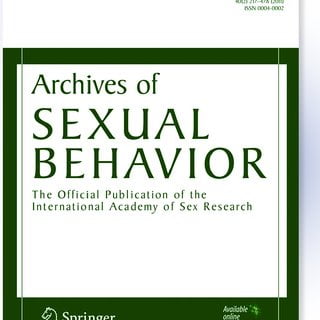Comment: Many sexologists deny that sexual conditioning occurs, especially if it arises later in life. They persist in promulgating the myth that sexual tastes are innate despite evidence to the contrary. However, this clear-sighted scientist is demonstrating the truth: human sexuality can be conditioned by associating specific cues with masturbation. This has important implications for today’s heavy porn users.
Excerpt:
Conditioned responses seemed stronger in this study compared to previous human sexual conditioning research. The present results support the use of a sexual conditioning framework for understanding sexual response patterns.
Arch Sex Behav
Hoffmann H. 2025 Apr 22. doi: 10.1007/s10508-025-03141-2.
Abstract
Individual differences in the strength of human sexual conditioning in the context of excitatory (CE) as well as inhibitory (CI) learning were explored in the present study. Consistent with as reported by Gray (1972), I hypothesized a positive correlation between sexual excitability scores (SES) and the strength of excitatory appetitive sexual conditioning and impaired inhibitory appetitive sexual conditioning as well as a positive correlation between sexual inhibition (SIS1 and/or 2) and the strength of inhibitory appetitive sexual conditioning and impaired excitatory appetitive sexual conditioning. A total of 26 female-bodied and 27 male-bodied people served as participants. Sexual conditioning occurred outside of the laboratory. Specifically, over a two-week period, participants masturbated to orgasm after smelling either a vial with geranium or basil essential oil (CS+/CE odor). They also engaged in a comparable nonsexual behavior after smelling the other (CS−/CI) odor. Subjects provided baseline and post conditioning measures of odor affect, subjective and genital arousal to the odors, motivational approach toward the CSs, and unconditioned stimulus (US) expectancy along with SIS/SES scores, a measure of compulsive sexual behavior, and a measure of masturbatory guilt. Medium to large effect size CE and CI learning occurred when assessing affective ratings and subjective arousal but only for females, although there were similar trends for males. Medium to large effect size CE but not CI learning occurred in terms of genital arousal for both males and females. For female-bodied participants, the present study found individual differences in sexual conditioning consistent with Gray’s predictions. SES scores negatively predicted CI learning and SIS1 scores negatively predicted CE learning, at least for some measures. Conditioned responses seemed stronger in this study compared to previous human sexual conditioning research. The present results support the use of a sexual conditioning framework for understanding sexual response patterns. [Emphasis supplied]
